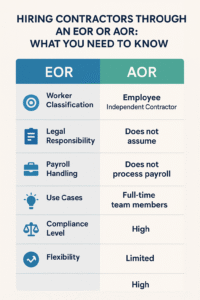
Introduction: Why Templates and Examples Are Your Best Friend
Writing or requesting a letter of recommendation can feel daunting – what format to use, what details to include, how long should it be? This is where templates and examples come in handy. A good template gives you a ready-made structure, so you’re not starting from a blank page. Real examples show you what a compelling letter looks like in practice, which can be incredibly instructive. In this post, we provide a variety of recommendation letter templates for common scenarios (general job applications, promotions, internships) and real example letters that you can learn from. These examples aren’t meant for copy-pasting verbatim – rather, use them as a starting point and customize them to fit the specific individual and situation.
For each template, we’ll outline what content goes where and why. We’ll also share snippets from actual recommendation letters that demonstrate best practices (with identifying details changed, of course). By the end, you should feel equipped to either write your own glowing reference or guide your recommender on what a great letter looks like.
SEO Tip: If you plan to download or share these templates, remember that even file names and image alt text can be SEO opportunities. For instance, naming a file “letter-of-recommendation-template-software-engineer.docx” or using alt text like “Sample recommendation letter for internship application” helps search engines understand your content. Little details like these can improve discoverability for those seeking templates.
Now, let’s dive into the templates and examples!
Template 1: General Job Application Letter of Recommendation
When to use: This template works for a standard job reference letter for an external job application. It’s written from the perspective of a former or current supervisor recommending an employee for a new job at another company.
Structure Overview: As discussed in earlier sections, a job recommendation letter should have the following sections:
- Header (Your contact information and date) – usually omitted in an email, but included in a formal letter document.
- Salutation – e.g., “Dear Hiring Manager,” or specific name if known.
- Opening line stating the recommendation purpose.
- Introduction of who you are and how you know the candidate.
- Paragraph highlighting candidate’s key skills/achievements, with examples.
- Paragraph on candidate’s character/personal qualities, possibly with an anecdote.
- Closing endorsement paragraph – clear recommendation and contact offer.
- Sign-off with your name and title.
Template Text:
To Whom It May Concern:
It is my pleasure to strongly recommend [Candidate Name] for the position of [Position Title] at [Company Name]. I am [Your Name], a [Your Position] at [Your Company], and I have had the privilege of supervising [Candidate Name] for [duration] as [Candidate’s Position] in my team.[Candidate Name] has consistently demonstrated [two or three standout skills or traits]. For example, [he/she] played a pivotal role in [specific project or task] where [provide details and results – e.g., “she helped increase our social media engagement by 50% over 6 months by implementing a new strategy”]. [His/Her] ability to [mention another skill – e.g., “analyze complex data and translate it into actionable plans”] was crucial to our department’s success, and speaks to [his/her] analytical and strategic strengths.
What truly sets [Candidate Name] apart is [his/her] character and work ethic. [He/She] is [choose descriptors: “dedicated, innovative, and a team player”]. For instance, when our team faced [brief mention of a challenge], [Candidate Name] [explain how they rose to the occasion – e.g., “volunteered to take the lead, ensuring we met our deadline”]. [He/She] fosters a positive environment in the workplace and has earned the respect of peers and leadership alike.
I am confident that [Candidate Name] would be a valuable asset to your organization. [He/She] has my highest recommendation for the [position] at [Company]. Please feel free to contact me at [phone] or [email] if you need any further information.
Sincerely,
[Your Name]
[Title]
[Company]
[Contact Information]
Why this works: This template hits all the important points: it establishes the recommender’s credibility, uses specific examples of accomplishments, and praises both hard and soft skills. It ends with an unambiguous endorsement (“highest recommendation”) and provides contact info for follow-up. You would, of course, customize the specifics (the skills, projects, numbers, etc.) for the individual. But the skeleton ensures you don’t forget any key element.
Example Highlight from a Real Letter (Former Employee to New Employer):
Sometimes it helps to see a piece of an actual recommendation letter. Here’s an excerpt adapted from a real letter where a manager recommended an employee for a sales position:
“I have worked with John Doe for the past two years at ABC Corp, where I am a Sales Director and John is a Sales Associate on my team. In that time, John has proven to be one of our most effective salespeople, consistently surpassing his quarterly targets. In 2022, he increased sales in his territory by 20%, the highest growth in our divisioninsightglobal.com. This achievement is a direct result of John’s exceptional relationship-building skills and diligence in following up with clients. Beyond the numbers, John is also the go-to person for new team members – he has mentored three new hires, helping them get up to speed and embody our company’s customer-centric approach.”
Why we like this excerpt: It quantifies John’s impact (20% sales increaseinsightglobal.com), highlights a key skill (relationship-building), and even notes his helpful nature with new team members. The tone is clearly enthusiastic. A hiring manager reading this would immediately sense that John is a high performer and valued colleague.
Template 2: Internal Promotion Recommendation Letter
When to use: This template is for when you, as a manager or executive, are writing to recommend one of your direct reports for an internal promotion or internal role change. The audience might be upper management or a promotion committee within your company.
Differences from an external letter: An internal recommendation can be a bit more direct since the readers are within the same organization and may even know the candidate. You can reference internal projects, use company-specific terminology, and you don’t need to explain your company or department. The goal is to highlight why the person is ready for the next level and how they’ve contributed so far.
Template Text:
Dear [Name of Hiring Manager or Committee],
I am writing to enthusiastically recommend [Candidate Name] for the position of [New Role] on [his/her] team. I have been [Candidate Name]’s [manager/supervisor] for [X years/months] in the [Current Department], and I can attest that [he/she] possesses the skills, experience, and leadership qualities needed to excel as a [New Role].In [Candidate Name]’s current role as [Current Position], [he/she] has [provide an overview of key accomplishments – e.g., “streamlined our project management process, leading to a 15% improvement in on-time delivery” or “consistently exceeded performance goals by at least 10% each quarter”]. [His/Her] deep understanding of [specific domain or skill] has been evident through [example – e.g., “the successful launch of the XYZ initiative, which [result or impact]”]. Importantly, [Candidate Name] has already been taking on responsibilities beyond [his/her] level – such as [example: “mentoring junior analysts and leading client meetings”] – which demonstrates [his/her] readiness for increased responsibilities.
On a personal note, [Candidate Name] is highly respected among our team. [He/She] leads by example, whether it’s by [mention something like: “putting in extra effort to meet a deadline” or “actively collaborating across departments to solve problems”]. [His/Her] promotion to [New Role] would be a natural next step and well-earned. I have no doubt that in this new capacity, [Candidate Name] will continue to drive outstanding results and be an even greater asset to [Company Name].
Please feel free to contact me if you need any further insight. I am confident in [Candidate Name]’s ability to thrive in [New Role], and I wholeheartedly recommend [him/her] for this promotion.
Sincerely,
[Your Name], [Your Title]
[Department]
[Contact Info]
Tips for using this template: When recommending for a promotion, align your points with the requirements of the new role. If the new role demands leadership, emphasize leadership examples. If it’s more technical, emphasize technical achievements. Since it’s internal, you can be candid about the person’s growth trajectory in the company. Endorse them strongly – the competition might be other internal candidates, and your letter could help tip the balance.
Example Highlight from a Real Letter (Manager to Internal Promotion Committee):
“During her 3 years on my team, Alice Nguyen has grown from a junior marketing coordinator into a key driver of our content strategy. As her manager, I’ve watched Alice take on leadership roles beyond her job description – for instance, last fall she led a cross-functional team to launch our new webinar series, which brought in 30% more leads than projected. Alice combines creative expertise (her campaign ideas consistently impress) with superb organizational skills (never missed a deadline). She also mentors our newer hires, showing she’s ready to step into a formal leadership position. I fully believe Alice will excel as the new Marketing Team Lead, and I recommend her without reservation for this promotion.”
What this example does well: It clearly states that the person has been performing above their current level and gives an example (launching a successful initiative). It touches on multiple strengths (creativity, organization, mentoring) relevant to a leadership role. The manager explicitly says she’s ready for a formal leadership position – a strong vote of confidence to the promotion committee.
Template 3: Academic or Internship Recommendation Letter
When to use: Use this for recommending someone for an internship, academic program, or entry-level opportunity. Often these letters are written by professors, internship supervisors, or mentors and might be addressed to a selection committee or hiring manager for an internship.
Tone and content differences: If it’s for academic purposes, you might emphasize intellectual curiosity, academic performance, and relevant skills. For internships, it could be a mix of academic and early professional traits (responsibility, willingness to learn, etc.). These letters may skew a bit more on character and potential, especially if the candidate doesn’t have extensive work experience.
Template Text (Professor recommending a student for an internship):
Dear Internship Committee,
I am writing to recommend [Student Name] for the [Name of Internship] at [Organization]. I am a Professor of [discipline] at [University], and [Student Name] has been a stand-out student in my [Course Name] class during [semester/year].[Student Name] is an exceptionally bright and dedicated student, with a solid grasp of [relevant skills or knowledge – e.g., “software development in Java” or “research methodologies in psychology”]. In my class, [he/she] not only earned a top grade (A) but also [mention something notable: “completed an independent project on [topic] that was among the best I’ve seen” or “consistently helped classmates understand complex concepts during group work”]. [His/Her] ability to quickly learn and apply new ideas will serve [him/her] well in a fast-paced internship setting.
Beyond academic excellence, [Student Name] has demonstrated strong initiative and communication skills. As the president of [Student Club/Organization] (which I advise), [he/she] organized events and led meetings efficiently, showing leadership far beyond [his/her] years. [He/She] is mature, articulate, and truly passionate about [field or career goal]. I believe [Student Name] will contribute greatly as an intern, bringing fresh ideas and a keen willingness to learn.
In summary, I give [Student Name] my highest recommendation for the [Internship Name]. [He/She] has the knowledge, drive, and collaborative spirit that will make [him/her] an asset to your team. Please feel free to contact me at [contact info] if you have any questions.
Sincerely,
[Prof. Your Name]
[Title, Department]
[University]
[Contact Information]
Using the template: If you’re not a professor but maybe an internship supervisor writing for a former intern, you’d adjust the intro accordingly (e.g., “I supervised [Name] during [his/her] internship at [Your Company] last summer…”). Then you’d highlight what they did during that internship. The key is to speak to their potential and foundational skills since interns or students might not have big achievements yet. Highlight their attitude, quick learning, teamwork, etc.
Example Highlight from a Real Letter (Intern Supervisor to Hiring Manager):
“As Jane’s internship supervisor at TechSolutions last summer, I was thoroughly impressed by her quick learning and proactive attitude. Jane had only completed two years of her computer science degree when she joined us, but she quickly became the go-to person for updating our database scripts – a task even full-timers found challenging. She is not only technically skilled but also asks insightful questions and seeks feedback, which accelerated her growth over the 10-week internship. Jane’s work directly contributed to a 15% reduction in data processing time for our team. Any organization would be lucky to have such a motivated and capable intern. I wholeheartedly recommend her for your program.”
Why this stands out: The supervisor cites a tangible result of the intern’s work (15% reduction in processing time), which is uncommon and impressive for an intern. It also praises her soft skills (asks questions, seeks feedback) demonstrating she’s trainable and proactive. This blend of hard result and soft skill endorsement makes the recommendation compelling.
Optimizing Templates: File Names and Alt Text for SEO (Bonus Tip)
If you’re a content creator or HR professional posting these templates online (or even sharing them internally), remember the earlier SEO tip. Use descriptive, keyword-rich file names for any downloadable templates. For instance:
- Instead of
Template1.docx, useJob-Recommendation-Letter-Template-General.docx. - Instead of
Template_promotion.docx, usePromotion-Recommendation-Letter-Sample.docx.
Similarly, if you include images of sample letters or infographics on your site, use alt text that describes the image content and includes relevant terms, like “letter of recommendation example for promotion.” These practices help people searching for specific types of recommendation letters find your resources more easily.
A close-up photo of a printed “Letter of Recommendation” document and a pen, symbolizing a completed reference letter. The document header reads “LETTER OF RECOMMENDATION” in bold.
Figure: Example of a recommendation letter document. Using templates can ensure your letters have a professional format and include all necessary information.
(Alt text and file name of images like this should be descriptive – e.g., “Letter of Recommendation document with pen” – to enhance accessibility and SEO.)
FAQs: Templates and Examples of Recommendation Letters
Q1: Is it cheating to use a template for a recommendation letter?
A: Not at all! Templates are a starting point to help you format and organize your thoughts. Using a template is common practice – it ensures you don’t forget key elements (like how to open or close the letter). The important part is to personalize the content. Don’t just fill in the blanks mechanically; add specific details and genuine sentiment. Think of a template like a recipe – you’ll follow the general structure, but you can add your own seasoning to make the letter uniquely suited to the individual.
Q2: Can I provide a template to someone I’m asking for a letter?
A: Yes, you can, and in many cases it’s appreciated. If you’re requesting a recommendation, you might offer a template or outline to your recommender, especially if they ask, “Do you have any guidance or a sample I could look at?” We provided email templates in Post 2 of this guide for that reason. Many busy professionals will welcome a reference (though some may have their own preferred format). Just be sure to ask politely and frame it as an offer: “I can send over a template or a sample letter if that’d be helpful.” And of course, give them all the info they might need (your resume, job description, bullet points of your accomplishments) to ease their writing process.
Q3: How long should a recommendation letter be?
A: Typically one page is standard. In terms of word count, that’s usually between 300 and 500 words. All the templates and examples we’ve discussed fit comfortably on one page. A very short letter (one or two paragraphs) might not seem substantive enough, while a multi-page letter might not get fully read. There are exceptions – academic references or certain detailed recommendation letters can run longer – but for job-related letters, concise and impactful is the way to go. Each of our examples demonstrates how to pack relevant info into a focused letter.
Q4: Should I include quotes or feedback from others in a recommendation letter?
A: It’s not required, but it can be a nice touch if done sparingly. For example, if a client praised the person, a line like “Client X told me after the project that John was ‘the most efficient and pleasant consultant’ they’d worked with” can reinforce your point. Or if you’re a professor, you might cite an observation from another faculty member about the student. However, ensure any quote is relevant and genuine. Don’t fabricate quotes or include them just for the sake of it. The letter should primarily be in your voice. Use quotes only when they add value or a different perspective that strengthens the recommendation.
Q5: Are there any legal or company policy issues with writing recommendation letters?
A: Most of the time, writing a recommendation is harmless and routine. However, some companies have policies about what you can disclose. For instance, certain employers only allow confirmation of dates and titles for references, or they may forbid written letters on company letterhead without HR approval. If you’re writing as an individual (especially on personal letterhead or email), this is usually not an issue – you’re offering your personal assessment. But if you’re writing in an official capacity and using company letterhead, make sure you’re not violating any internal policies. Also, stick to truthful observations and firsthand knowledge to avoid any liability. Don’t mention sensitive info (like health issues or protected characteristics). If you’re unsure, check your company’s HR guidelines. Generally, a positive letter that the employee requests is low risk. Just be honest and professional in your praise.
Conclusion: Templates and examples take the guesswork out of crafting an effective recommendation letter. By following proven structures and learning from real-world samples, you can save time and produce a polished letter that hits all the right notes. Remember to adjust each template to fit the specific situation – the more customized, the better. Whether you’re the one writing a recommendation or the one seeking it, these resources should make the process smoother and the end result stronger.
Call to Action: Ready to put these templates to use? Divino Business Solutions has compiled a free Recommendation Letter Toolkit featuring all the templates above (and more) in editable format. Download the toolkit and feel free to tweak the examples to suit your needs. And if you need further assistance – be it in HR best practices, professional writing services, or career development – Divino is here to help. Let us know how we can support you in making every recommendation count!





